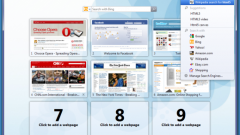Instruction
1
If Opera is configured in such a way that included the classic user interface, click on the menu item "Tools", and in the appeared submenu, select the "Settings". A window opens in your browser settings.
2
In the browser, the settings of which the modern user interface (since version 11 it is enabled by default), click on the red button with the letter O in the top left corner, select the menu item "Settings" and then the submenu item "General settings". The result will be the same as in the previous case.
3
Find it in the settings window the five tabs. Go to the last one, called "Advanced" or "Advanced".
4
On the left in the settings window will see a vertical list of sections. Select the line "Security". The right of the list appears appropriate for this section combination of buttons and input fields.
5
Locate the bottom row, starting with "Update Opera". Near there is input field with two options: "do Not check" and "Ask before installing". Enabled by default the second of them, select instead the first. Click "OK".
6
Also disable the automatic update of the Opera browser you can use the settings editor. Go to one of the tabs to the local address opera:config. Expand Auto Update, and then in the Autoupdate Server line https://autoupdate.opera.com/ replace on the blank. Click the "Save" button located at the bottom of the section. Then close the tab.
7
Remember that if the version of Opera is not the latest, the security of the system is reduced. To prevent this from happening, periodically update the browser manually. The metered channel, it is advisable to download a new version of the browser in another location where there is unlimited channel, and then bring it to your computer using a USB flash drive. It is important that both machines were not infected.









